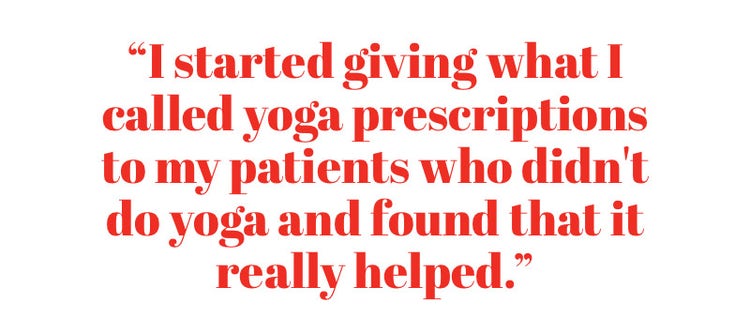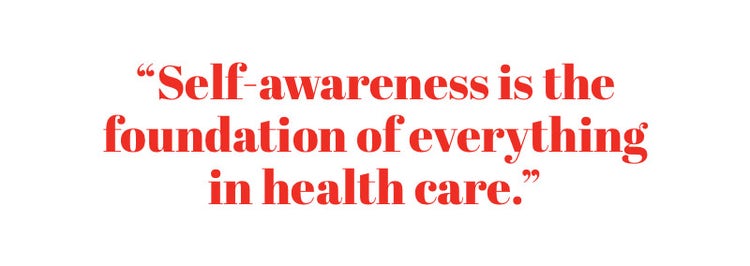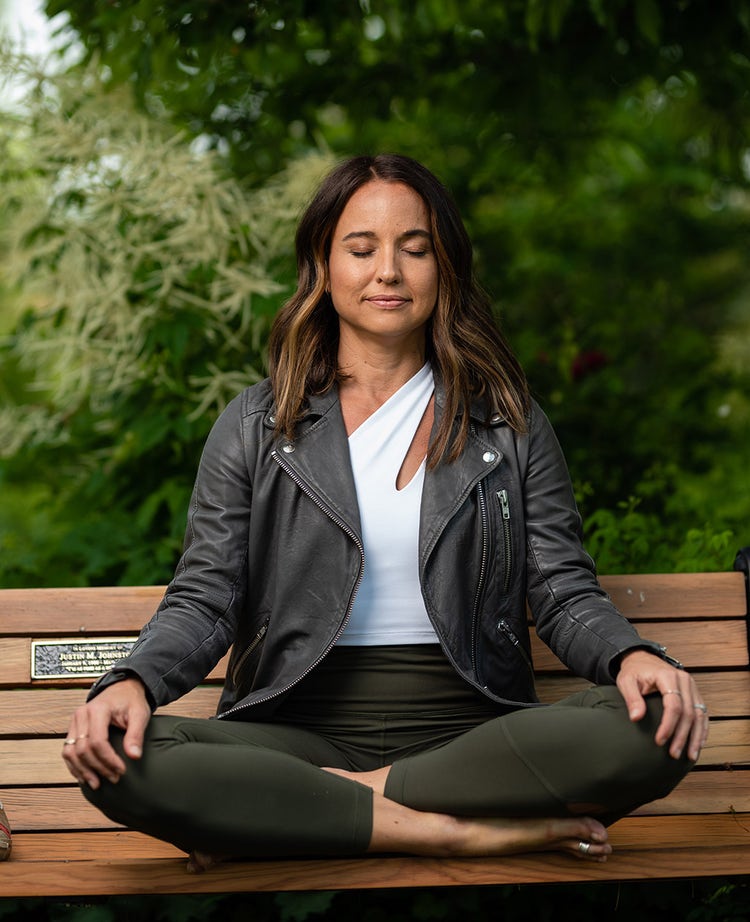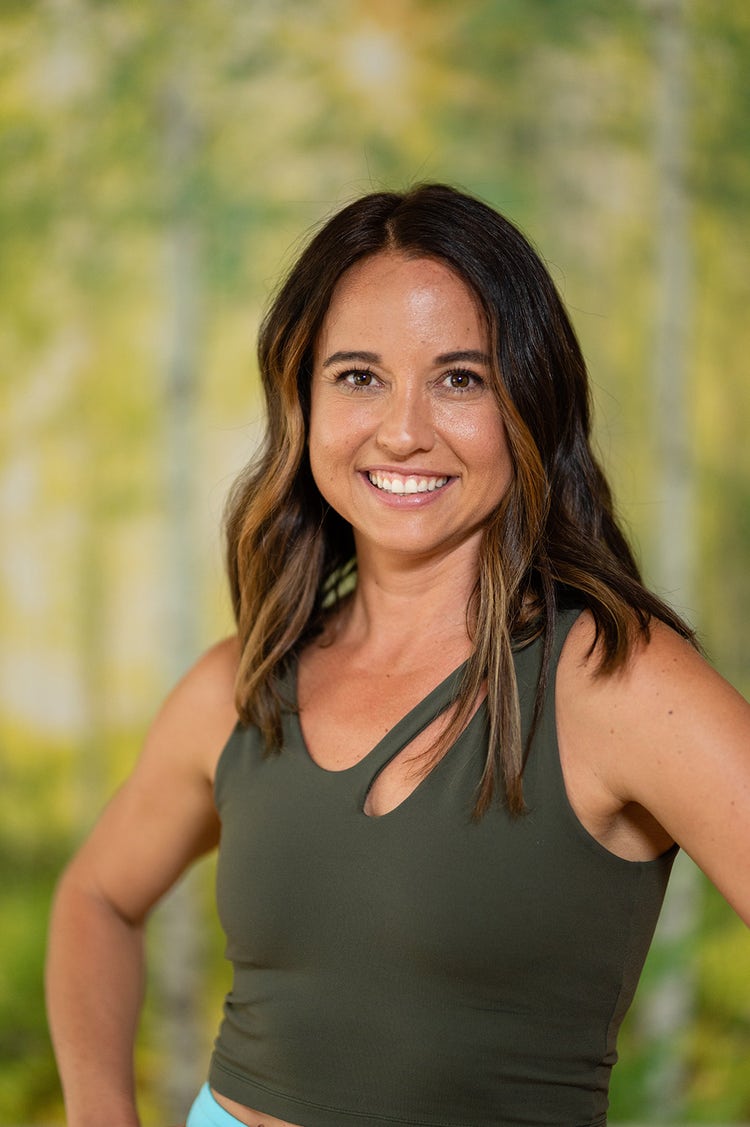Tiffany Cruikshank Shows Yoga Supports Western Medical Care

When Tiffany Cruikshank’s parents sent her off to a wilderness program at 14, little did they know their “troublemaker” daughter would blaze a trail for Eastern and Western medicine practices to work together to help people around the world truly thrive.
Cruikshank is the creator of Yoga Medicine, a training regimen and platform for yoga teachers to infuse and up-level their instruction with an understanding of anatomy, physiology and biomechanics to help their clients regain health and improve performance. For Western health practitioners, Yoga Medicine offers a way to help patients find the yoga instruction that will provide the therapeutic benefits they need.
At the wilderness program, Cruikshank encountered yoga as well as plant-based medicine for the first time—and was captivated by both. To the athletic teen, yoga initially had purely physical appeal, and plant walks with an herbalist at the camp sparked her interest in holistic medicine.
Back at home, Cruikshank found a yoga class (“a wooden sign with a phone number—this was before the internet”) and started apprenticing with an herbalist. Both practices felt empowering, and when she graduated high school at 16 and entered college in pre-medicine, she knew she wanted to go into some form of medicine.
“But I didn’t really know what kind of medicine,” Cruikshank says. “So I looked into Western and naturopathic and ayurvedic medicine, and I really fell in love with Chinese medicine and being able to look at the whole person. Yoga really went along with that: It was another modality of being able to work with the person who is in front of me and give them tools”—tools that didn’t require any fancy equipment, just body awareness.
Rx: yoga

When Cruikshank completed her premed and medicinal plant biology studies and got her college degree, she went on to four years of study in traditional Chinese medicine and started her acupuncture practice. That’s when a little empirical evidence led to her breakthrough.
“I saw a lot of patients who also practiced yoga,” Cruikshank explains. “And right away, I noticed that my patients who did yoga responded more quickly. So I started giving what I called yoga prescriptions to my patients who didn’t do yoga and found that it really helped, as well.”
Then came the opportunity to test her observations—at Nike. As a lifelong athlete, Cruikshank developed her acupuncture practice to specialize in orthopedics and sports medicine. When the global athletic gear giant wanted to introduce acupuncture to its employees, it tapped Cruikshank to get that program off the ground.
“A lot of the people who work [at Nike] not only have a full-time job but also are full-time athletes, even pro or semipro, which was really fun,” she says. But not easy. Cruikshank says she had to figure out how to navigate employees’ dual stressors of working 60 hours a week and athletic competition.
One employee was preparing to swim the English Channel: “She swam it not only one way but back, which was crazy, on top of a full-time job at Nike,” Cruikshank recalls. “It was really fun to be able to have that extra challenge of not just working with a competitive athlete but also now a competitive athlete who’s a very busy human being” with work and family.
Cruikshank also taught yoga as part of the Nike program and saw how quickly employees recognized the benefits to their training routine. Her work there also helped her zero in on the key to those benefits for competitive and everyday athletes: body awareness.

Health begins in awareness

“Athletes are so in tune with their bodies that as soon as they really start to see how it affects them, it’s hard not to become hooked on yoga,” Cruikshank says—and that’s why yoga “is such a huge thing now in sports medicine and professional athletics.”
Cruikshank regards yoga as a calibrator for navigating a middle path between healthy resilience and healthy stress that prompts gains in growth and strength—whether physical or mental, or both.
“Body-awareness—being able to have some kind of awareness of what’s going on inside of myself—is the foundation of everything in health care,” Cruikshank says. “If a patient doesn’t know anything about what they’re feeling or how they’re responding to the treatments I’m giving them, it’s very difficult as a health care provider to navigate the best course of action. And if the goal is fine-tuning health and wellness, then body-awareness is essential—I can’t find the right exercise or nutrition regimen without it.”
Yoga in the medicine cabinet
With some awareness, the expanding universe of yoga practice shifts from overwhelming choice to individual opportunity. Cruikshank points out that the many types of practice allow for personalization, not only from individual to individual but from day to day.
For professional athletes, that personalization is essential when needs differ before and after competition, and in season and out of season. Cruikshank gives the example of high-profile football clients whose needs “on Monday are very different from Friday.”

But Cruikshank’s passion is for helping those who are not experts navigate their options. “For a health-care provider,” she says, “it’s really negligent to just refer someone to yoga [generically] because they could end up on bolsters and cushions, or jumping or hopping, or chanting, all of which could be helpful, and all of which could also not be helpful, or maybe worse.”
Mindset also is an important factor. “We see in biomechanics that I actually fire different muscles when I feel comfortable in my environment versus when I feel threatened or afraid,” Cruikshank explains. She adds that the more research there is into the power of the mind, the more we understand how important awareness is in recalibrating our health and wellness.
Yoga empowers the patient—through body awareness—to advocate for himself or herself and ask questions, Cruikshank says, such as, “Why do I need to do that? Do I have to do that? What happens if I don’t do that? What are my options?” And, she says, the importance of mindset extends to the health-care practitioner, as well.
“Surgeons want you [the patient] to be confident because we know it’s really important for the outcome. … So I think there’s a balance, too, of being able to ask questions and then move forward and trust [your provider],” Cruikshank says. “Place your trust in this person, but also remember that you need to continuously be an advocate of your own health care.”
Finding your balance
Cruikshank recognizes that physical practice alone might not lead to self-awareness; mindset can block it. Her first book, “Optimal Health for a Vibrant Life” (CreateSpace, second edition, December 2014), curates nutrition, yoga and meditation practices for readers to introduce week by week to build healthy habits, decrease the stress load on their bodies and revitalize their health.
But some patients still did not respond to these healthy lifestyle changes, prompting Cruikshank to take a closer look at why. “One thing I felt was important was looking at mindset and looking at how they talk to themselves, how they see themselves,” she says.
Being able to question our ideas of who we are and where we belong in the world are powerful tools in the practice of yoga, and she wrote her second book, “Meditate Your Weight” (Penguin Random House, April 2016), about making peace with our health and our bodies to create long-term, sustainable patterns.
It starts with a nonjudgmental attitude toward ourselves—including our yoga practice. “I think where people struggle the most in yoga and in health care is when they get attached to a certain style or a certain way and then become rigid around that,” Cruikshank says. “[The key is] to be able to see—without being attached to which way is right or wrong—and know what will be helpful for me in this time.”

When best is not better

Cruikshank advocates the following self-talk: “I’m not here to do the best yoga practice ever. I’m here to do my yoga practice so that I can be better when I leave.” She continues, “No one really cares how great you did your yoga pose if you’re a jerk when you leave. Yoga is there to help us connect to ourselves so that yeah, we might still be a jerk from time to time, but then maybe we notice it and maybe we can laugh.”
“There’s a physicality to yoga, but there’s also this nonjudgmental awareness that creates self-empathy, and self-empathy is the foundation for my capacity to have empathy for other people,” she says. “This is the spiritual side of yoga that is really accessible to everyone.”
It’s nice to have so many options to access better health, Cruikshank says, but “it can also be overwhelming to feel like I’ve got to have my green juice, I’ve got to do my myofascial release, I’ve got to do my yoga, I have to meditate, and then I have to go to the gym and I have to do my cardio, but I have to make sure I take time out during my day to meditate again.”
“Just mindful attention is a form of self-care,” Cruikshank adds. “Sometimes allowing yourself not to have to do all those things is a form of self-care. Sometimes saying no is a form of self-care. … And so, I think balance is the key word.”


Secret Strength: Connective Tissue
Tiffany Cruikshank says that insights into the function of fascia and connective tissue are transforming ideas about health—and she believes this understanding will underpin advances in sports medicine.
Fascial tissue is the connective tissue that encases our muscles and attaches them to our bones. From her observations of cadaver dissections, Cruikshank says the muscle tissue itself is usually fine, but the connective tissue is often adhered or damaged. “The new understanding of injuries is really that most, if not maybe all of them, are happening in that connective tissue. It’s no longer just a question of contractile [muscle] strength, but also the connective tissue strength that encases it; the connective tissue is what trains the tissues to be resilient,” she explains.
Connective tissue responds to diversity of movement and diversity of stimulus. “One of the easiest, simplest take-aways is just doing different things, moving in different directions, finding different ways to approach your training or yoga practice, and of course myofascial release can be a great tool when you need to be more specific,” Cruikshank concludes.
Apparel: Tiffany Cruikshank line, coming in June to kiragrace.com
Photo credit: Mark Kuroda, kurodastudios.com
Hair and make-up: Katie Nash, katienashbeauty.com